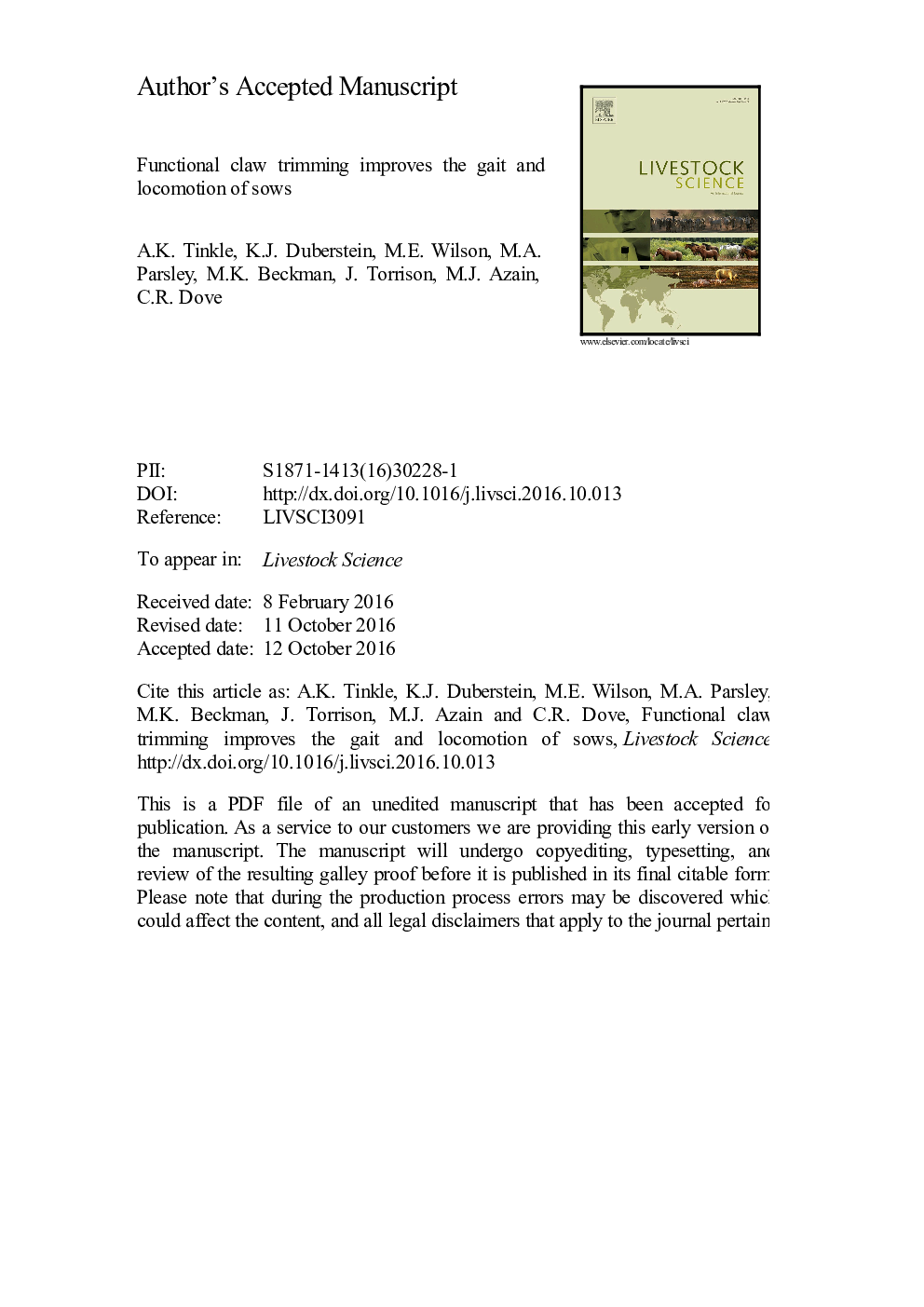| Article ID | Journal | Published Year | Pages | File Type |
|---|---|---|---|---|
| 5543167 | Livestock Science | 2017 | 25 Pages |
Abstract
Within the swine industry, lameness is one of the leading causes of culling and euthanasia of sows. Lameness negatively affects sow productivity and reproduction, both of which are major factors leading to culling sows. Claw lesions are one of the leading causes of sow lameness, specifically caused by overgrown claws or dewclaws. The objective of this study was to discern the difference in sow gait, pre- and post-functional trimming. In this study, 52 sows were functionally trimmed to a claw length of 5.5Â cm from the coronary band, and were videotaped using two high-speed cameras at three time points: pre trim (PRE), one hour post (POST1) and 48Â h post (POST48) trimming. Videos were analyzed to measure the following spatiotemporal values: stance duration, swing duration, stride duration, stride length, limb velocity, breakover duration, and duration of three-limb support phases. Sows showed significant improvement in gait from PRE to POST48 in response to claw trimming including a decrease in swing and stride duration, decreased breakover, and increased swing:stance ratio, and velocity (P<0.05). These changes signify more forward movement, which may indicate increased efficiency of gait following claw-trimming.
Keywords
Related Topics
Life Sciences
Agricultural and Biological Sciences
Animal Science and Zoology
Authors
A.K. Tinkle, K.J. Duberstein, M.E. Wilson, M.A. Parsley, M.K. Beckman, J. Torrison, M.J. Azain, C.R. Dove,
